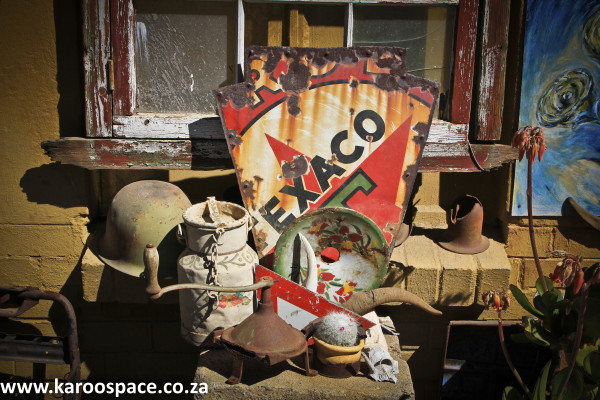
Old South African Brands in the Karoo
I love old signs when I’m on the road. They tell me where I’m going, who lived here, what brands were promoted and what the travelling salesmen flogged to the locals over the decades. Sometimes, on a dusty Karoo trail in the back of beyond, they’re all I have for company. I run across old […]

I love old signs when I’m on the road. They tell me where I’m going, who lived here, what brands were promoted and what the travelling salesmen flogged to the locals over the decades. Sometimes, on a dusty Karoo trail in the back of beyond, they’re all I have for company.

I run across old baked enamel signs, from time to time, full of bullet holes. Some of them were made years before World War II and they’re mostly crazed with bursts and cracks. However, haggle as I may, I can never get their owners to part with them.
Here are some roadside bits of South Africa’s history, trapped for the ages on a piece of signage.
Beer Thoughts in the Blikkies Bar… the Origins of Charles Glass
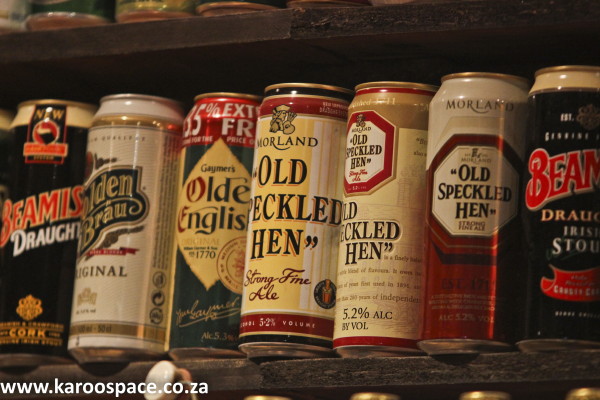
It’s about an hour before closing time and I’m ensconced here at the Blikkies Bar in the Northern Cape village of Carnarvon, my nose deep in Eric Rosenthal’s Tankards & Tradition, all about the history of beer in South Africa.
Surrounding me is a world of empty beer cans from all over the globe. The former hotel owner had, at some stage, been sent these tins from near and far. The Blikkies Bar has become something of a traveller’s icon. Thousands of fine beers are represented on the walls, from Sweetheart Stout to Old Speckled Hen.
I am presently drinking a frosted glass of our most famous beer brand, Castle Lager, and reading about its founding brewer, Charles Glass.
“Glass and his wife (who worked with him in the brewery) both had bad tempers” says Eric. The money men at Castle (later SA Breweries) were concerned that the couple would, in their feuding, trash the brewery. They bought them out in 1890 and retained the Glass name so that by 1892 the company went by the name of “Glass & Co. Ltd – Castle Brewery, Johannesburg – Ale and Stout.”
Who would have guessed? Here I thought Charles Glass was a marketing man’s dream-up campaign.
Frisco, Raadsaal & Koffiehuis
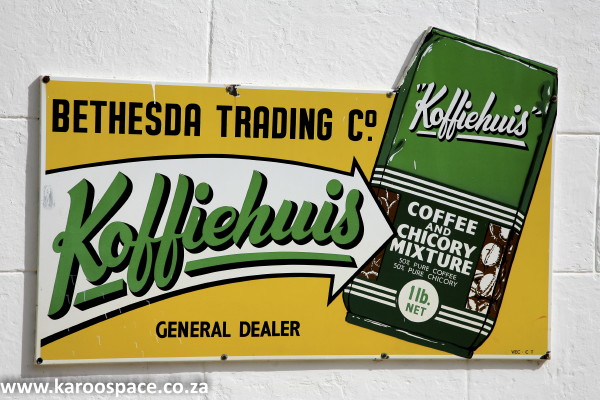
Frisco is one of those South African instant coffee brands that, it seems, we all grew up with. “Frisco is about family values, special feelings and a hint of nostalgia”, is how the company describes it.
And it also has great appeal to the massive South African expat bloc living in the United Kingdom, the USA, Australia and New Zealand. The many “Saffer Shops” around the world invariably stock the ubiquitous Frisco tins – even though offshore coffee choices abound.
Koffiehuis has been in SA for a century and, along with Raadsaal and Frisco, completes the trio of much-beloved home-brewed “kits koffies” – instant coffees.
Mazawattee, Joko and Five Roses
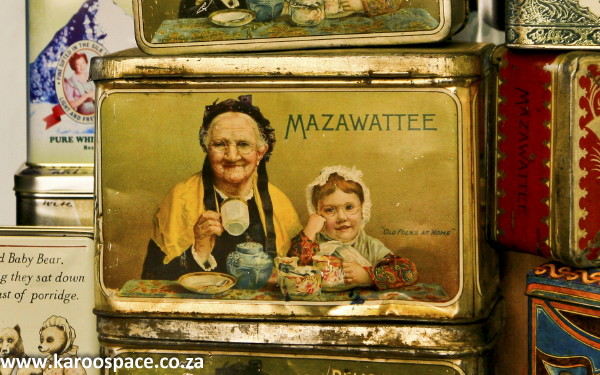
Joko and Five Roses enamel signs were once all over South Africa’s platteland. There must have been a major marketing drive to the thousands of old-time trading stores where tea signage was once as plentiful as Coca Cola emblems.
The trading store tea signs are now collectibles, and you will find them being used as prized décor objects, often as centrepieces for sitting room walls or outside entertainment areas. They’re all about nostalgia.
Evidence of the legendary Mazawattee Tea, however, comes in the form of small tins displaying a rather enigmatic (some might say downright creepy) bonneted dowager sitting with her granddaughter, enjoying a cup of tea. The painting is called “Old Folks at Home”.
Mazawattee (an Eastern combo-name meaning “pleasure gardens”) was registered as a trade mark in 1887. The old lady in the painting was modelled by one Mary Ann Clarke, wife of an Islington bootmaker. The child was the daughter of her next-door neighbour . She stood in because Mrs Clarke’s own granddaughter was said to be “too busy” to sit for the painter at the time.
Mazawattee was a tea-marketing success and, when the high cost of the Anglo-Boer War drove British tea taxes skywards, the company branched out into cocoa and chocolate.
The tins became souvenirs all over Britain and the colonies, including South Africa.
Lyons Tea
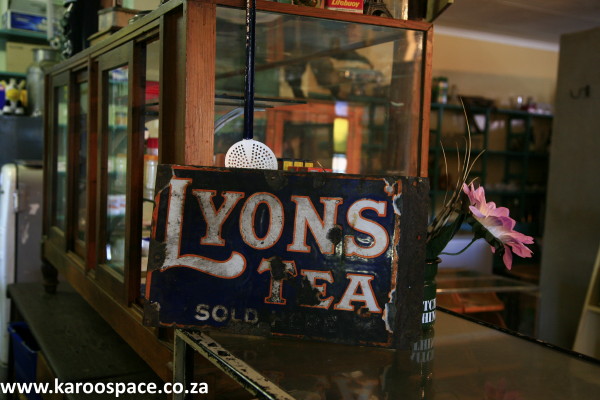
Lyons is best known back in England for having established a string of wildly successful and stylish Corner House tea shops all over London. The company became a hotel and catering empire, with fingers in various food pies, like ice creams and biscuits. Lyons was also to become a leader in business computing systems.
To supply their Corner Houses, Lyons set up cocoa plantations in Ghana and tea estates in Nyasaland (Malawi). They spread their marketing operations to South Africa, Kenya and Rhodesia (Zimbabwe).
In Johannesburg, Lyons was one of the upmarket teas you ordered in the then-popular downtown department store restaurants like Stuttafords.
Coke, Pepsi & Hubbly Bubbly
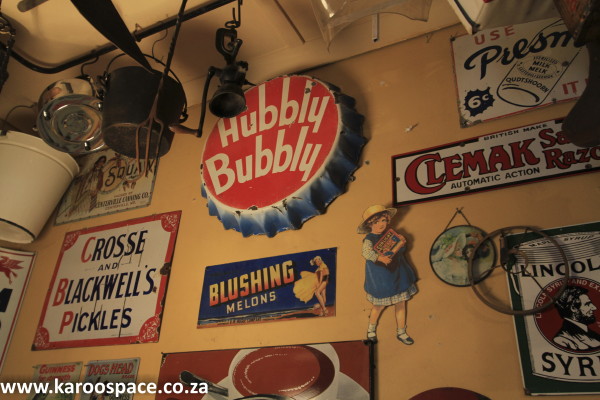
If you’re a Baby Boomer, born sometime in the 1950s or the decade before, you will remember Hubbly Bubbly. There was once a Hubbly Bubbly branch here in Cradock once, about four blocks from my house.
Hubbly Bubbly, the cold drink and not the hookah pipe mixture, was first bottled in East London in 1953. It was the boom of the great soft drink business, which has since gone into an anti-sugar decline.
Records state that Hubbly Bubbly was exported as a product to Britain five years later by an enterprising merchant called Joseph Holland. He set up 30 Hubbly Bubbly bottlers (“In Eight Fab Fruit Flavours”) across the UK and, for a while, it was a huge success.
But the cola story has always been about Coke and Pepsi. Coke was launched locally in 1940 with the launch of the SA Bottling Company’s first factory in Port Elizabeth. Within 30 years, Sabco had embarked on an acquisition spree, buying up small bottlers all over the country.
The international strength of the Coca Cola brand (their baked enamel signage is seriously collectible) was awesome from the start. In Africa, we say we’re at the limits of civilisation when the Coke signs begin running out.
For many years, Pepsi Cola was seen as the only rival to Coke, but it never managed to win the beverage race. Experts say it’s a simple matter of brand recognition – and there, Coke has the upper hand.
Petroliana
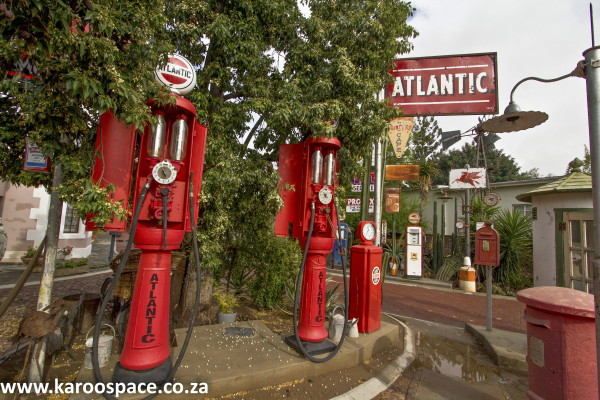
Petroliana is the collective term used to describe antique filling station components and marketing items used to advertise oil products to the travelling world.
Caltex, Texaco, Pegasus, Atlantic and Mobil, they’ve all been in South Africa for decades. Perhaps the most enduring (and now, for other reasons, the most controversial) petrol branding is Shell.
In the old days both here and in the USA, poorly-lit filling stations were noticed by the petrol pump globes that used to shine at night.
In Williston, Northern Cape, there’s a legend about a guy who got sozzled every evening and used to navigate home by following the petrol station Shell sign. His drunken meanderings were generally successful, except for full moon nights when he would get confused and end up somewhere far away in the veld.
A mate of mine grew up deep in the Kalahari and became a Petroliana Head at a young age.
“Take that old Atlantic Motor Spirit sign” he says, pointing at an item in his Republic of Rustica venue in Calvinia. “That was somebody’s front door in Olifantshoek, up north. I’ve discovered them on old farms, in shacks, lying in the veld, propping up gates – for me it’s like finding treasure.”
The way his eyes glitter when he tells his Karoo Picker stories, you can see my friend’s passion lies in the hunt, rather than the possession, of these old signs.
Parthenon Paints
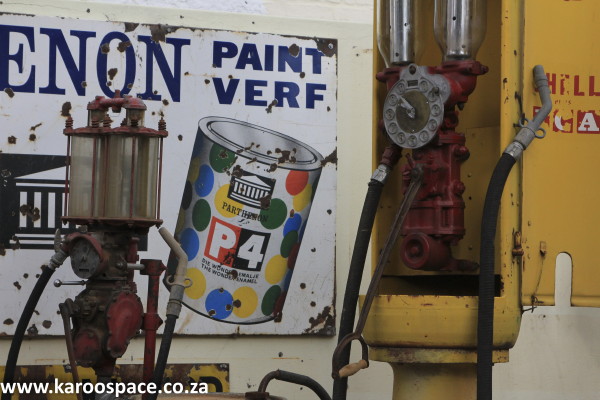
Parthenon Paints has been a South African company for just more than a century. But it really goes back to 1889 and the arrival of Welshman Herbert Evans in the new mining boomtown called Johannesburg.
Armed with only a ladder, a couple of paint brushes, integrity and ambition (according to the corporate legend) Evans began to make paint for Jo’burg, write the city signs, offering glazing and gilding services to boot.
In fact, when more than 30 tons of dynamite exploded at the Braamfontein magazine, thereby shattering nearly every window pane in Johannesburg, the enterprising Evans bought up all the glass in the country and practically re-glazed the entire city.
In 1915 he established Parthenon and became something of a leading expert in the ready-mix colour paints, floor polish and vehicle varnish.
His most famous employee was to be the late Walter Sisulu (former secretary-general of the ANC), who worked as a paint mixer for the company for five years.
Aermotor
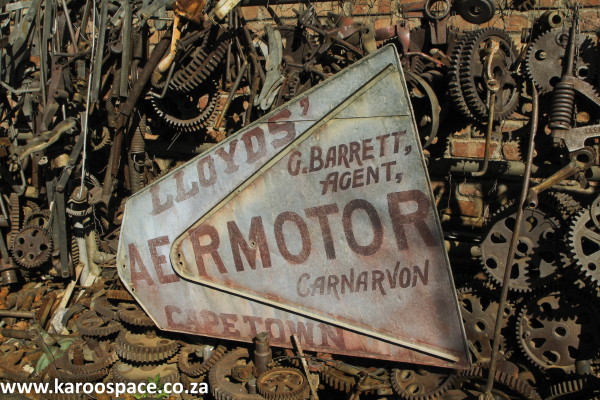
Aermotor, the American windmill company, was founded by La Verne Noyes in 1888, and is still a world-leading producer of water-pumping windmills. Aermotor has been in South Africa since the mid-1890s.
On quiet nights on the veld of the Karoo, the gentle purring of the rotary wheel brings back calming memories of happy family occasions on the farm.
And if you should come across an enamel plaque bearing the classic Aermotor motto of “Wherever you go, you see them. Whenever you see them, they go”, offer the guy whatever he wants. Like most classic enamel signs, they’re as rare as rocking horse droppings – and just as valuable.
Dinkie Dick – The Mystery
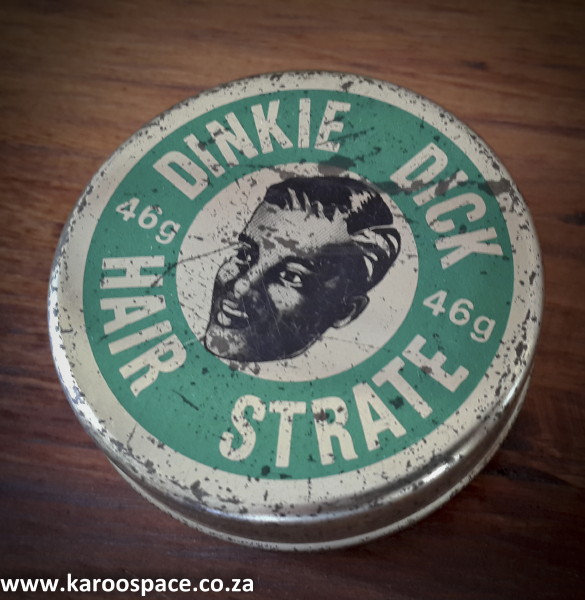
In the cool, dark recesses of a Kalahari trading store, I once came upon a tin of ancient hair grease called Dinkie Dick. It reminded me of the Dapper Dan hair grease used by matinee idol George Clooney in O Brother, Where Are Thou?
I took the little tin of Dinkie Dick home and scoured the Internet for information on the product. Nothing. That was one SA brand that sank without a trace.
Words and Photographs by Chris Marais, Karoo Space.